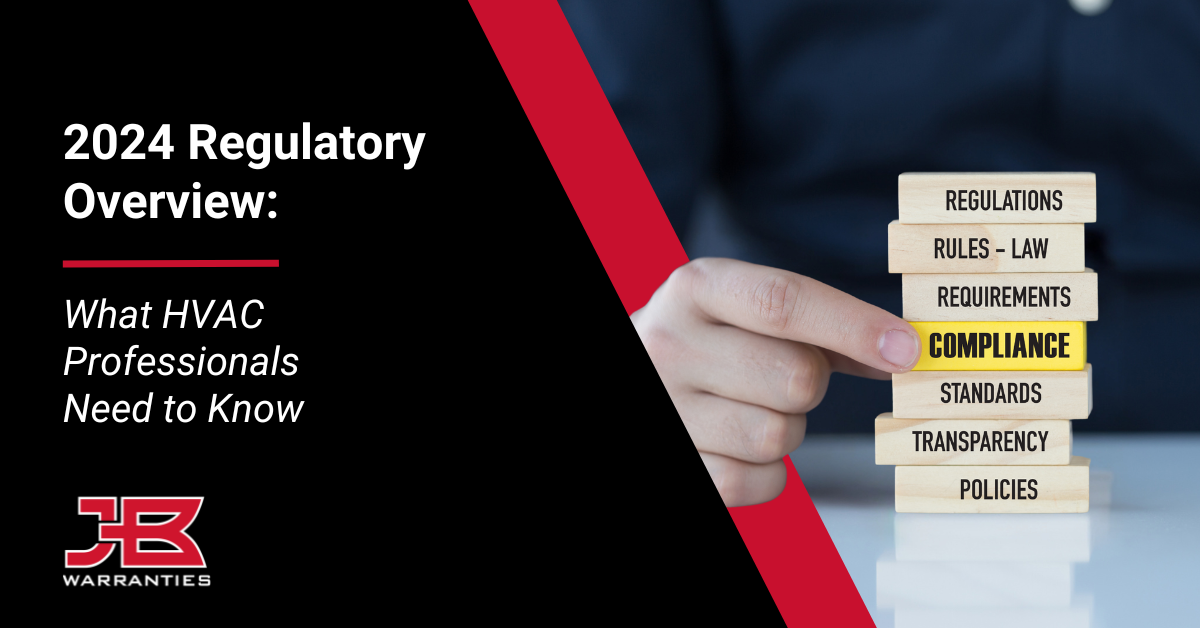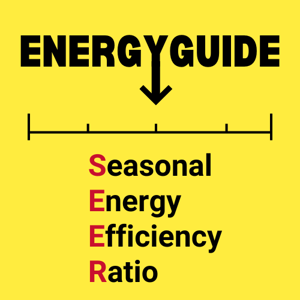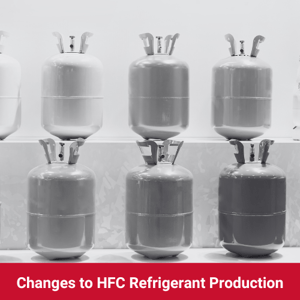
While evolving rules and regulations are nothing out of the ordinary for the HVAC industry, our sector has begun to encounter some pretty substantial impacts recently. Fast-paced shifts toward eco-friendly and sustainable HVAC solutions have led lawmakers to implement complex regulatory changes that are soon to, or have already begun to, impact HVAC contractors and customers alike.
Between stricter HVAC efficiency standards and steep changes to refrigerant production and use, now is the time for contractors to understand the ins and outs of incoming HVAC regulation changes. To ensure operational success all 2024, keep reading to learn more about the various HVAC regulations currently in motion and how they’ll begin to impact your business in the near future.
Changes to HVAC Efficiency Standards
Since 1992, the U.S. Department of Energy (DOE) has implemented minimum energy conservation standards for certain household appliances and equipment, including HVAC products. After more than eight years since the last HVAC regulation update, the DOE recently issued new seasonal energy efficiency ratio (SEER) and heating seasonal performance factor (HSPF) standards in 2023.
Under the new DOE HVAC regulation updates, central air conditioners and heat pump equipment sold and installed after January 1, 2023 are now required to meet specific SEER or HSPF rating minimums depending on their location. Take a look at the specifics of the new ruling.
New Minimum SEER Ratings for AC Units
 The seasonal energy efficiency ratio (SEER) of an HVAC system measures the overall cooling performance of a unit, with a higher rating being indicative of higher energy efficiency. Effective January 1, 2023, single-package ACs and split-system ACs must now feature a minimum 14 SEER (13.4 SEER2) rating when purchased and installed in the northern region of the U.S.
The seasonal energy efficiency ratio (SEER) of an HVAC system measures the overall cooling performance of a unit, with a higher rating being indicative of higher energy efficiency. Effective January 1, 2023, single-package ACs and split-system ACs must now feature a minimum 14 SEER (13.4 SEER2) rating when purchased and installed in the northern region of the U.S.
In the southern and southwestern regions of the country, where the average customer’s HVAC cooling load typically takes up a larger percentage of the home’s energy use, single-package ACs and split-system ACs must now register a slightly higher minimum efficiency requirement, depending on the given size and type of unit. These minimums include:
- Split system air conditioner less than 4.5 tons: 15 SEER (14.3 SEER2)
- Split system air conditioner more than 4.5 tons: 14.5 SEER (13.8 SEER2)
- Single packaged air conditioner: 14 SEER (13.4 SEER2)
To ensure full compliance and help determine the minimum efficiency requirements for equipment in your operating location, it can be helpful to refer to the National Association of Home Builder’s HVAC efficiency map and charts.
New Minimum HSPF Ratings for Heat Pumps
In addition to air conditioning technology, there are new minimum efficiency standards for household heat pumps. Similar to SEER, the heating season performance factor (HSPF) is used to measure heat pump efficiency, with a higher HSPF rating equaling higher efficiency and cost savings. Under 2023 updates, split system heat pumps purchased and installed in 2024 must now feature a minimum 8.8 HSPF (7.5 HSPF2) rating, regardless of the U.S. location.
New Efficiency Testing Procedures for HVAC Systems
Note that the SEER2 and HSPF2 metrics noted above are derived from newly-introduced DOE testing methods, which can now measure system efficiency with higher accuracy. Unlike traditional SEER testing, SEER2 testing better reflects how external static pressure and ductwork for a unit impact its overall efficiency. With SEER2 testing just now gaining traction, an HVAC unit’s EnergyGuide may display either a SEER or SEER2 rating dependent on its manufacturing date, making understanding these conversions increasingly helpful.
Changes to HFC Refrigerant Production
 As part of the American Innovation and Manufacturing (AIM) Act of 2020, the U.S. Environmental Protection Agency (EPA) has begun enforcing its plan to reduce the production and use of hydrofluorocarbons (HFCs) by 85% by 2036. HFCs, including R-410A and R-404A refrigerants, which have a high Global Warming Potential (GWP) rating, already endured a 10% reduction in 2022 and could potentially see this reduction reach 60% just by the end of 2024.
As part of the American Innovation and Manufacturing (AIM) Act of 2020, the U.S. Environmental Protection Agency (EPA) has begun enforcing its plan to reduce the production and use of hydrofluorocarbons (HFCs) by 85% by 2036. HFCs, including R-410A and R-404A refrigerants, which have a high Global Warming Potential (GWP) rating, already endured a 10% reduction in 2022 and could potentially see this reduction reach 60% just by the end of 2024.
As these commonly-used refrigerants continue to be phased out, HVAC manufacturers will begin to ramp up production of units that use A2L refrigerants instead, which have been approved under the EPA’s Significant New Alternatives Policy (SNAP). While this is great for reducing environmental concerns, A2L refrigerants will not work in older systems using high-GWP refrigerants and will require updated training for HVAC contractors and technicians.
EPA Extends Sell-Through Period for High-GWP Systems
In response to the continuing phaseout requirements, HVAC manufacturers have expressed financial loss concerns regarding an overflow of units that won’t meet upcoming low-GWP requirements. Under the previous ruling, January 1, 2025, would have marked when contractors would be permitted to install lower-GWP HFC residential air conditioning and heat pump systems with a GWP rating of less than 700.
However, with strong concerns among HVAC industry stakeholders, the EPA extended this sell-through period, allowing for any inventory of higher-GWP HFC HVAC equipment manufactured before January 1, 2025 to now be installed until January 1, 2026. After this cut-off date, all new residential and commercial AC and heat pump systems installations must comply with the 700 GWP maximum.
How Can 2024 HVAC Regulations Impact Contractors and Customers?
With new HVAC regulations having either hit the trades already or preparing to arrive, contractors need to understand the impacts each will have on their operations. In regards to the new minimum efficiency standards for air conditioners and heat pumps, the industry anticipated production delays in 2022 and 2023 as manufacturers shifted into new designs. Now, roughly a year into these changes, such concerns have lessened, but contractors may still experience waits for certain models.
In regards to the ongoing HFC phase-out, this new HVAC regulation poses a higher impact on both contractors and customers. As high-GWP refrigerant production decreases in the coming years, customers requiring a recharge of these refrigerants may encounter increased delays and higher costs for services due to lower accessibility. With the growing adoption of A2L refrigerants, HVAC professionals will also need to upgrade their certifications through proper safety training.
Protect New High-Efficiency and Low-GWP Installations with a Warranty
As new HVAC regulations continue to settle across the industry, contractors can begin to expect a stronger adoption of higher efficiency and low-GWP systems, and customers in search of eco-friendly solutions. Because customers will continue to invest in new and improved HVAC technology, it’s important to support their investment with reliable extended warranty offerings.
Beginning the day of installation, JB Warranties Premium Protection Plans protect a customer’s HVAC technology from unexpected (and costly) repairs and replacements. Covering all major brands alongside streamlined claim filing and management processes, JB Warranties works to ensure that contractors are compensated for their labor and that customers are taken care of, always.
Chat with a warranty expert today to learn why JB Warranties is the top choice for your HVAC business!
Brian Bohannan
Vice President of Sales at JB Warranties






